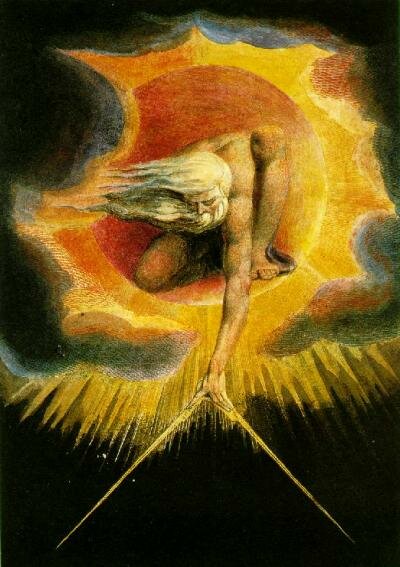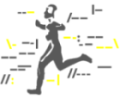|
|
|
William Blake (1757-1827)
The William Blake Archive
William Blake, The Ancient of Days, 1794.
"Artists like William Blake, and Saint Hildegard seem to have included migraine figures in their artwork." (Cited from Gary Lockhart: Migraine Headaches; in: Natural Earth: The English Standard Reference on Herbal Healing - Volume 1: The Herbal Center of Healing, November 6, 2003)
"The visions of William Blake, Lewis Carroll and St. Theresa could well have had their origins in migraine attacks these people endured." (Cited from Migraine Headaches... BASIC FACTS, November 6, 2003)
A major concern of the 'migraine hypothesis' of William Blake's visions is the fact that it is based alone on the phenomenal similarity between some of Blake's paintings (e.g. The Ancient of Days 1794) and the typical moon-sickle shape of a migrainous scintillating scotoma or fortification spectrum, respectively. However, in contrast to the evidence available in the aforementioned cases of Hildegard of Bingen and Lewis Carroll, the existing biographical research on William Blake has not yet demonstrated, to the best of our knowledge, that a diagnosis of migraine can be supported by additional evidence from autobiographical writings and/or contemporaries' observations. Thus, the notion that William Blake was a migraineur inspired by his visual aura experiences has to be considered, for the time being, as insufficiently supported.
Author: Klaus Podoll
Last modification of this page: Mon. May 31, 2004
 Top of the page Top of the page



|
|


|
| |
Copyright © 2005 Migraine Aura Foundation, All rights reserved. Last modification of this site: August 25, 2006
Thanks to: RAFFELT MEDIENDESIGN and GNU software | webmaster@migraine-aura.org
http://migraine-aura.org/EN/William_Blake.html
|








 Top of the page
Top of the page

